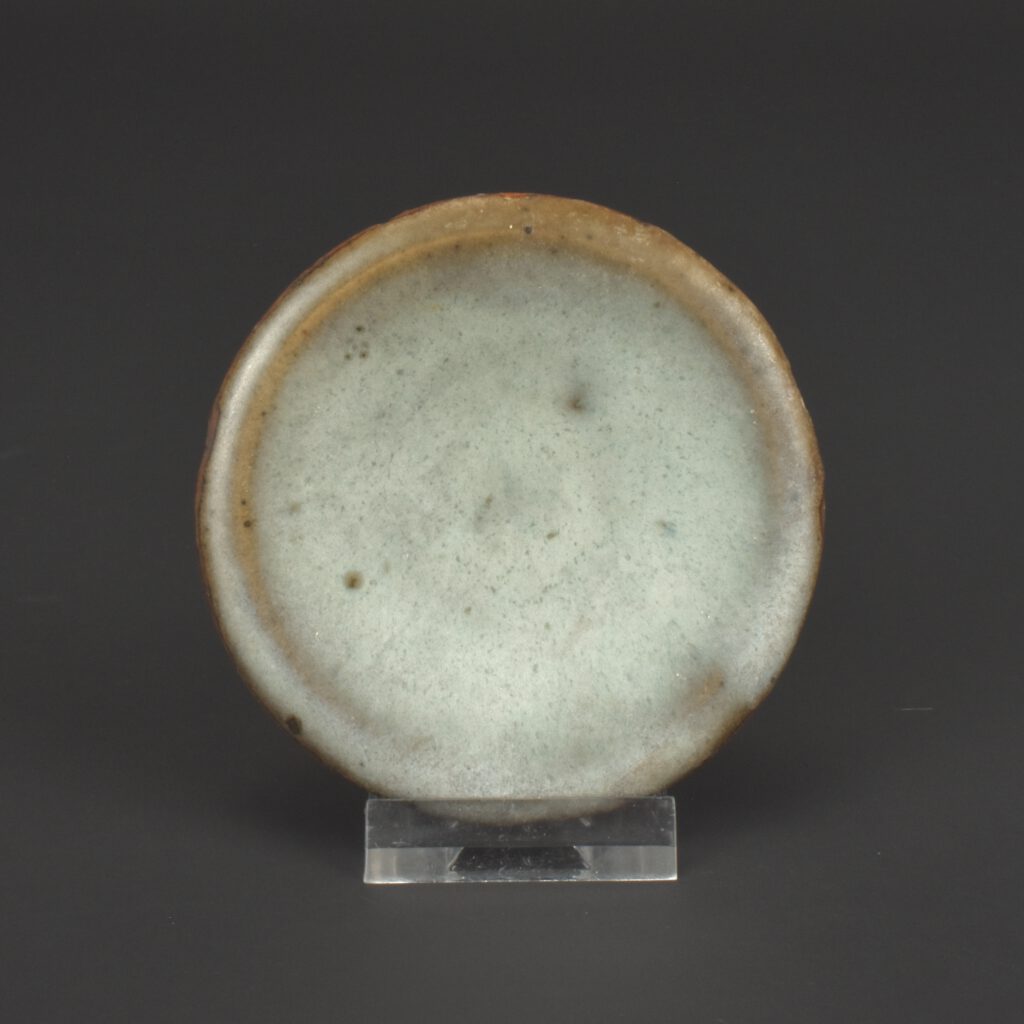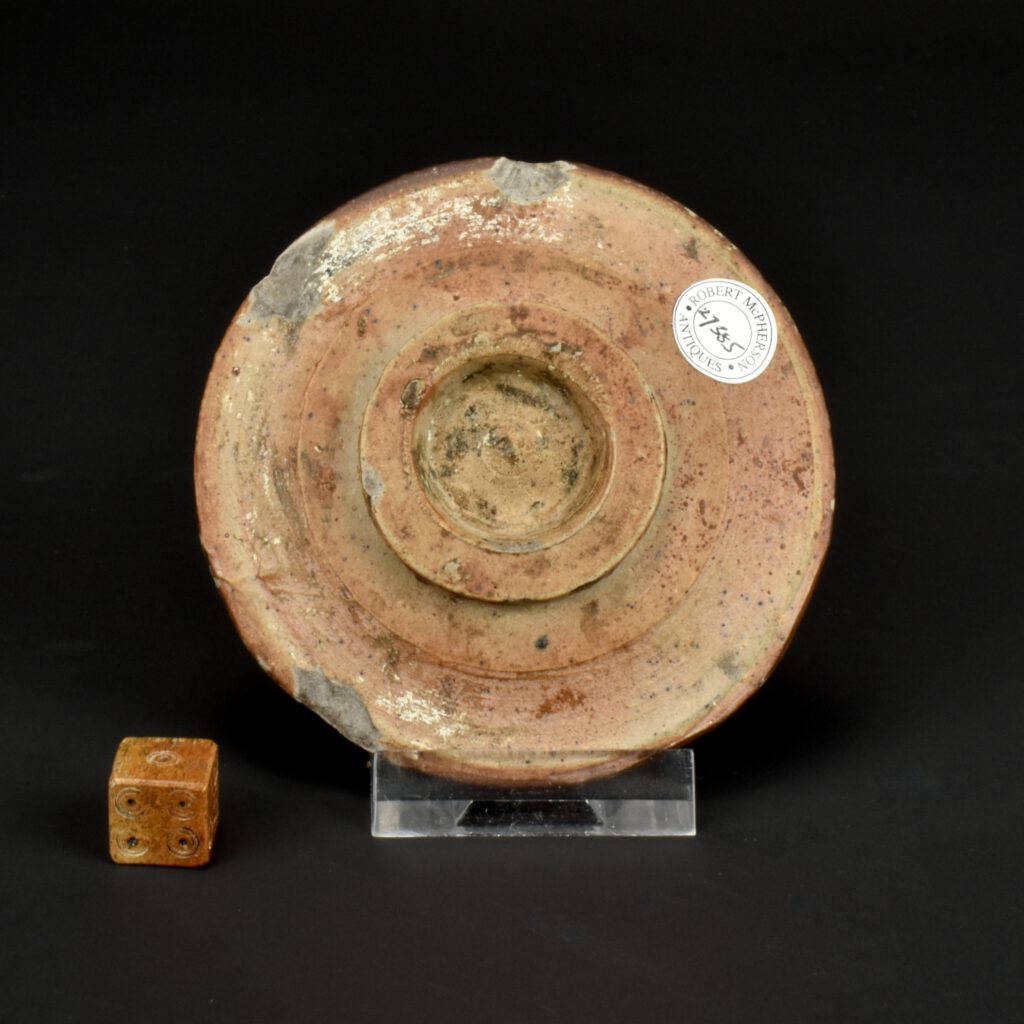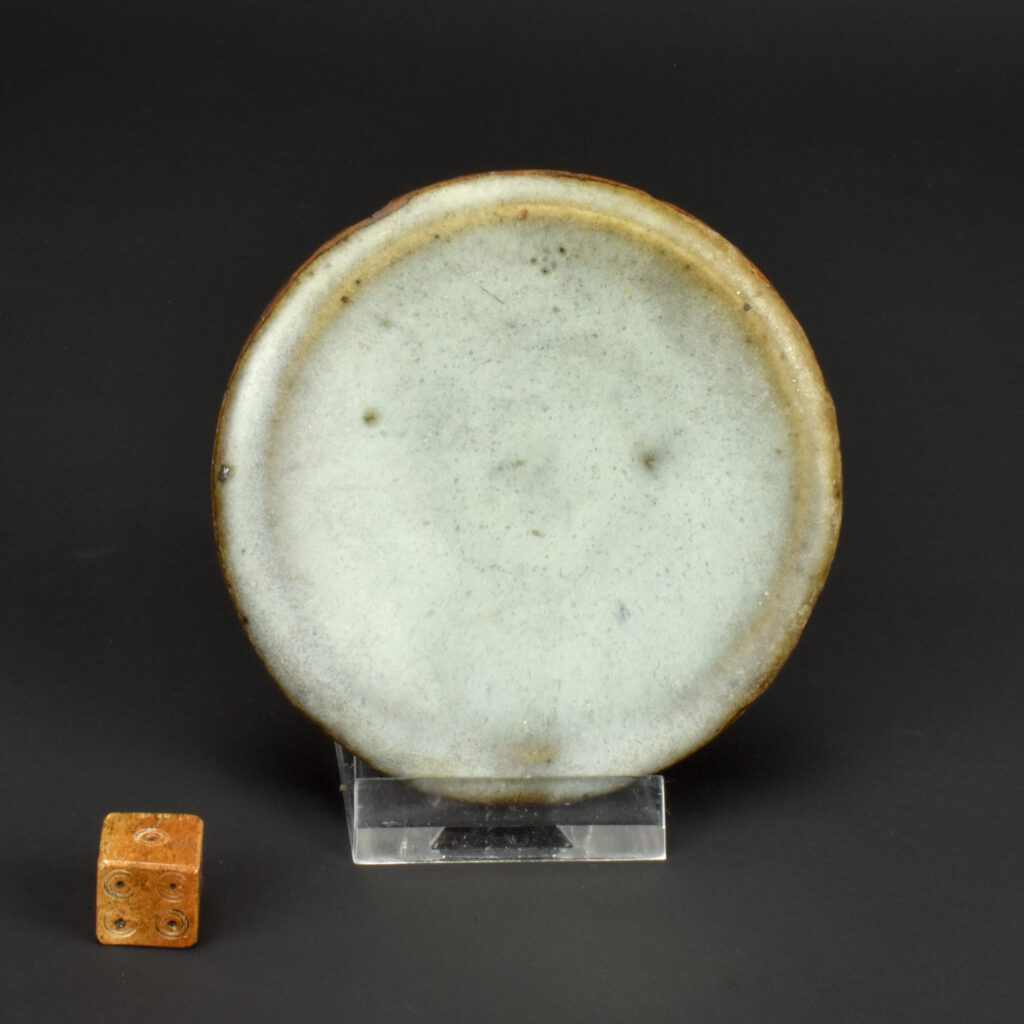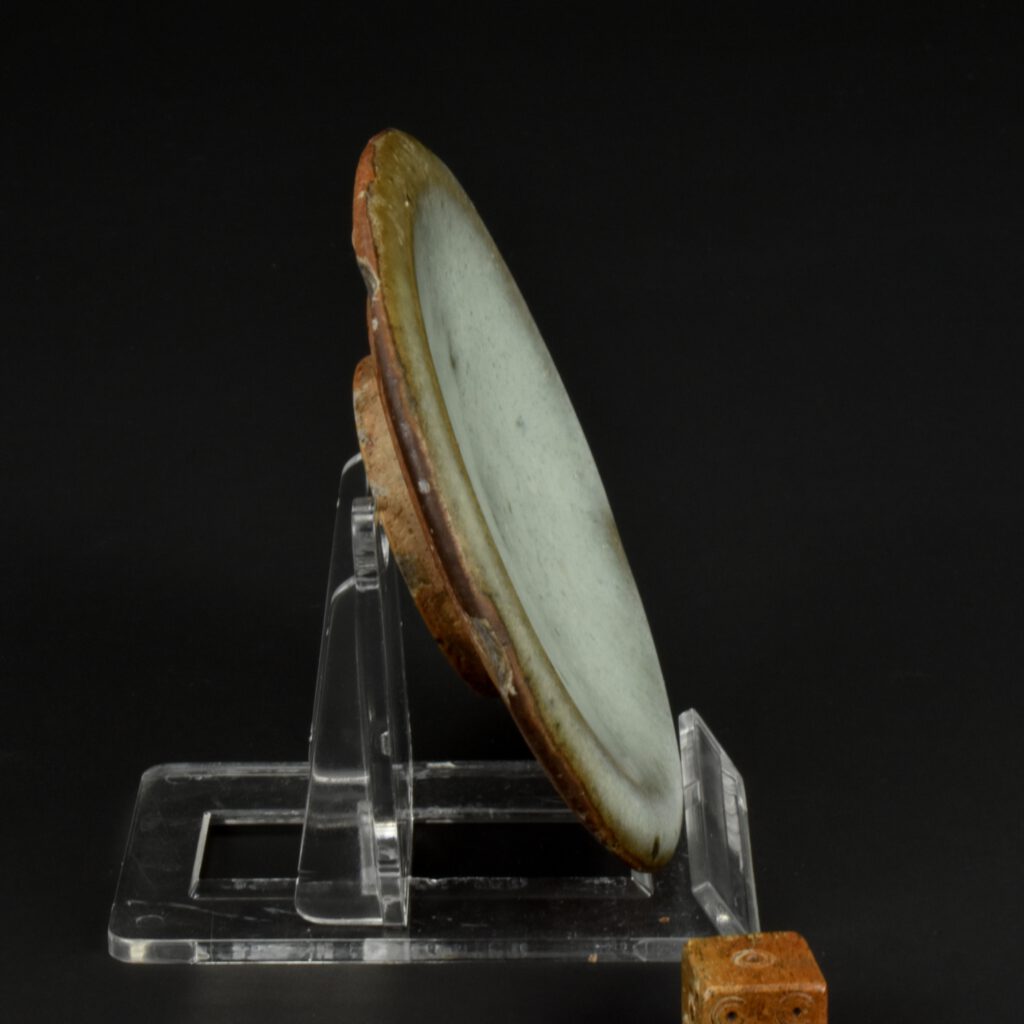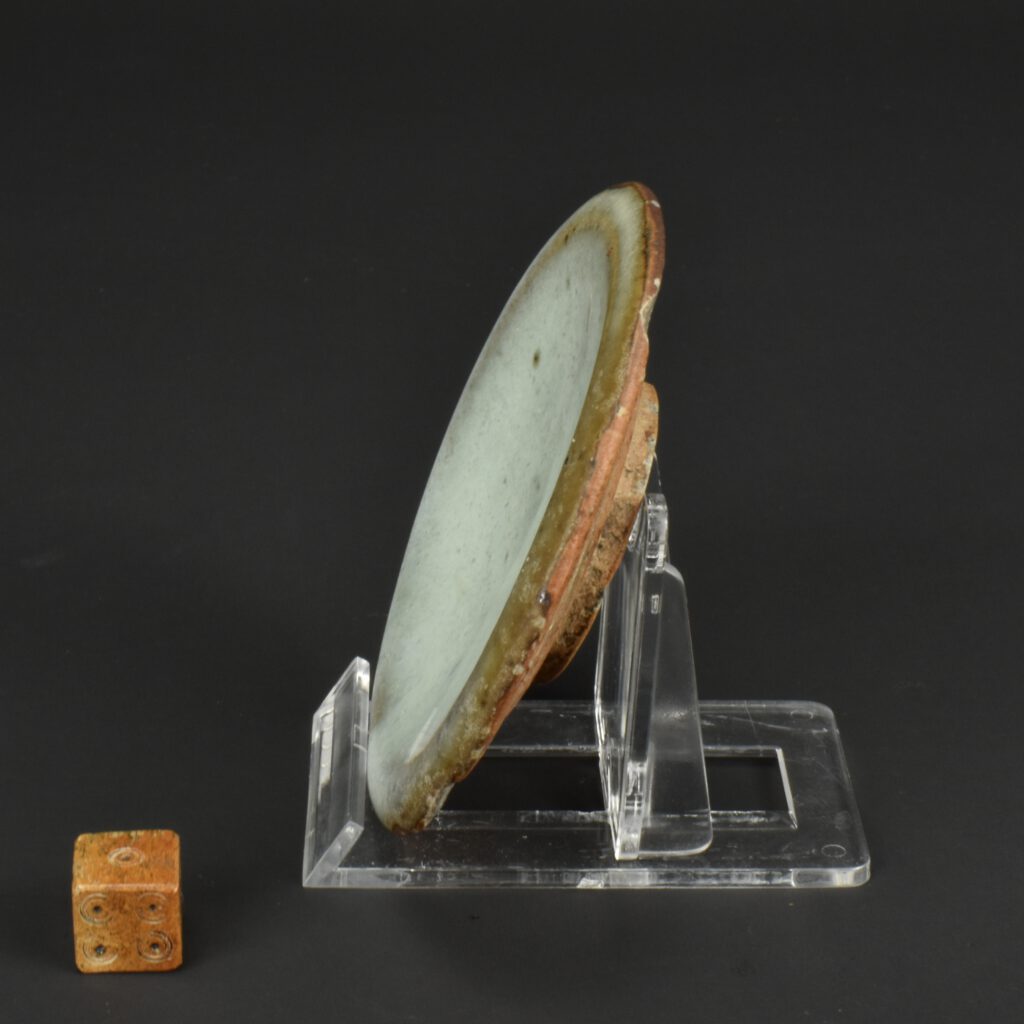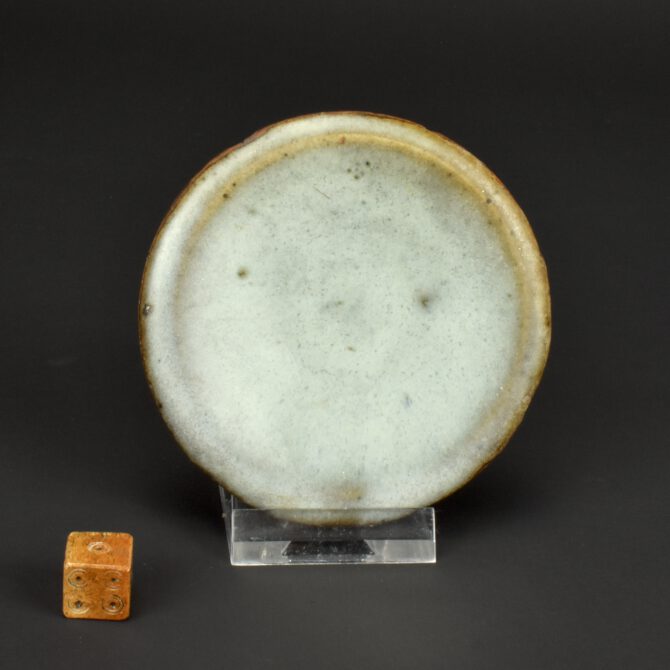
A Small Song or Yuan Jun Ware Dish, Jun Kilns, Henan Province, 12th or 13th Century
A Small Song or Yuan Jun Ware Dish, Jun Kilns, Henan Province, 12th or 13th Century. This Jun thickly potted Jun dish has a thinner, down turning rim. The base has been cut deeply cut and the foot is rather wide and deep for such a small dish. The glaze is of an attractive colour, it varies in depth, part of the downturned rim has thinner glaze showing the body through it. The grey body can be seen on the back, where it has been chipped. The unglazed and undamaged back has fired an orange red due to oxidized iron. Jun ware from Northern China has been much admired but little understood, however new research has revealed much about its production. Fired between 1250-1300 C. The glaze is full of `spherules` that diffuse the light. These tiny light scattering droplets of glaze diffuse the light and give Jun ware its soft look. For more information on Chinese glazes see : Chinese Glazes, Their Origins, Chemistry and Recreation (Nigel Wood, A & C Black, London, 1999). For further information see : Chinese Ceramics from the Meiyintang Collection, Volume One (Regina Krahl, Azimuth Editions 1994. ISBN 1-8985592-02-0) page 218 to 225. Jun ware is the last of the ‘Five famous wares of the Song dynasty’.
See Below For More Photographs and Information.
SOLD
- Condition
- Three large but shallow chips to the back.
- Size
- Diameter 8.5 cm (3 1/3 inches).
- Provenance
- N/A
- Stock number
- 27385
Information
A Northern Song or Jin Dynasty Jun Ware Dish, Jun Kilns, Henan Province, 11th or 12th Century.
Robert McPherson Antiques - Sold Archive 26671.
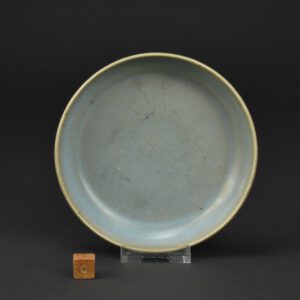
See Below For More Photographs and Information.
Condition
A bruise to the rim from a crack along the rim and a very small rim crack, see photographs below..
Size
Diameter 12 cm (4 3/4 inches)
Provenance
Knapton and Rasti Asian Art. Robert McPherson Antiques, Nicholas de la Mare Thompson (1928-2010) purchased 25th of April 2005.
Stock number
26671

